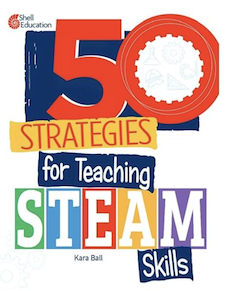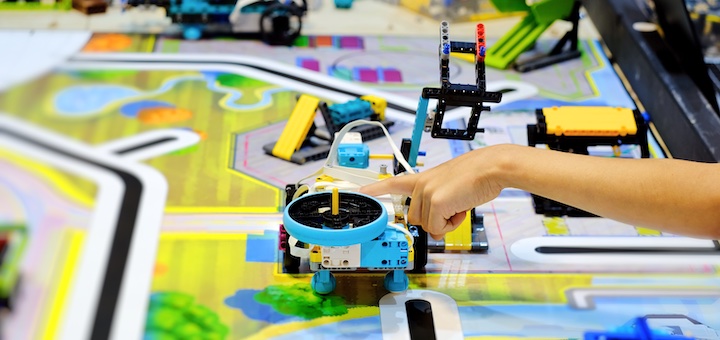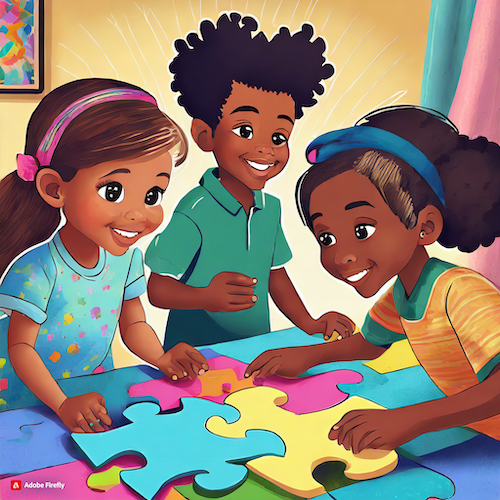Use Failure as a Tool to Empower Kids’ Learning
By Kara Ball
 A decade into my teaching career I faced a unique opportunity: Pioneering a STEAM program. But in 2014 there was no established STEAM curriculum, no examples – just uncharted territory.
A decade into my teaching career I faced a unique opportunity: Pioneering a STEAM program. But in 2014 there was no established STEAM curriculum, no examples – just uncharted territory.
As the sole STEAM educator in my district, I dove into research, devoured blogs, and acquired every resource on STEAM education I could find.
The next four years were a roller coaster. Some attempts became fixtures, like our shark dissection and Pinewood Derby; others faltered. Yet, even in failure, lessons emerged, guiding me to refine and hone a one-of-a-kind STEAM program.
In 2018, my efforts earned me a spot as a State Teacher of the Year and one of four finalists for National Teacher of the Year. The curriculum I designed intentionally encouraged students to take risks, learn from mistakes, and extract valuable lessons from each failure. During this transformative year, I focused on championing the importance of embracing failure as an integral part of the journey to success.
The importance of failure
My book 50 Strategies for Teaching STEAM Skills devotes an entire section to the pivotal role of failure. This pays homage to the significant influence failure had in shaping our STEAM program.
By scrutinizing lessons and activities that didn’t go as planned (have you seen that picture of a dumpster on fire floating down a street?), I was able to determine what strategies would prove more effective. These so-called failures served as a compass, directing me toward a profound understanding of what genuinely worked for our students, ultimately paving the way for our successes.
Embracing failure isn’t just about acknowledging mistakes – it’s about learning from them. It’s a mindset that weaves through every aspect of education, teaching students that failing isn’t the end but a crucial step toward success.
Whether it’s in mastering STEAM skills or navigating the complexities of writing a paper or solving a math problem, the ability to learn from setbacks and persevere is a universal skill. It’s the essence of what I believe makes education truly transformative for our students, preparing them not just for going to college or starting a career but for life.
3 STEAM-y activities that teach persistence
Here are three ideas to assist students in persevering through, learning from, and celebrating failure:
1. Learning from Icons
Consider incorporating stories of renowned figures who encountered setbacks on their path to success. Each week, I kick off our sessions with a brief slide or video showcasing a well-known individual who grappled with failure before achieving greatness.
Take Michael Jordan, the iconic basketball legend, for instance – initially rejected from his high school team, he didn’t let it hinder his passion. His mother’s encouragement led him to use feedback constructively, fostering his training and skill improvement.
Similarly, before launching the whimsical empire of Disney, its founder Walt Disney faced rejection from a newspaper job, the paper deeming him not creative enough. Undeterred, Disney persisted, refining his animation skills despite skepticism about his character Mickey Mouse.
In our discussions about these figures, the emphasis lies not just on their eventual success but on the actions they took in response to failure. These examples vividly illustrate that failure doesn’t signify the end but instead serves as a crucial steppingstone toward success.
2. Morning Mind Gym
Kickstart each day with brain teasers and logic puzzles. These low-risk, engaging activities serve as an effective warm-up, fostering critical thinking, building confidence, and instilling persistence.
One of my favorite websites for finding activities for the Morning Mind Gym is Thinkfun.com. They have a collection of free downloadable games designed to spark creativity and build problem-solving skills. If you are looking for online or app-based logic games and puzzles, consider Mentalup.
My favorite puzzles to do with the students are Rebus puzzles. When I was a student I received a book of Rebus puzzles as a gift and spent hours trying to solve them. I used that same book with my students, having them work through the visual brain teasers trying to figure out the message.
You can find examples of Rebus puzzles to do with your students at NIH Kids Environment Kids Health website. From Sudoku and jigsaw puzzles to Wordle and riddles, these exercises equip students with the ability to navigate challenges, developing essential skills to handle frustration and problem-solving in a fun and interactive way.
3. Engineering Failure Exploration
Embrace failure as a learning tool through the practice of engineering failure analysis. Students engage with real-world examples of engineering “oops,” such as space shuttle launch mishaps, bridge collapses, boats sinking, and even humorous engineering failures.
Dedicate 10 minutes a day or week to exploring these failures, encouraging open discussions about what went wrong and the resulting impacts. Prompt students to consider alternative approaches that engineers might take in similar situations, fostering a mindset of proactive problem-solving.
As part of this reflective process, invite students to recall personal experiences of failure and analyze them in a manner similar to an engineering failure analysis strategy. By identifying the root causes and contemplating alternative actions, students not only gain insight into their own challenges but also develop a resilient and growth-oriented mindset.
This approach transcends the confines of engineering, proving beneficial in other academic areas. For instance, when a student encounters setbacks in assignments, applying a failure analysis becomes a constructive and reflective strategy.
This involves a thorough examination of what went awry and the formulation of prevention strategies. By instilling the belief that failure is a stepping stone to success, we empower students to navigate challenges with confidence and view setbacks as opportunities for growth.

Lessons from the failure of a great machine: The Tacoma Narrows Bridge
As we explore these strategies, the crucial role of adults in modeling the process of learning through failure becomes evident. By openly sharing our missteps and demonstrating resilience, we pave the way for students to embrace failure and understand that setbacks are opportunities for growth and learning.
Fostering a culture where setbacks are celebrated as opportunities for growth demands our collective commitment. As educators, we stand at the forefront, guiding students through the intricate maze of learning and life, emphasizing that success is often found in the invaluable lessons gained in the face of failure.

Kara is National Board Certified in Early Childhood and a Distinguished Alumni award recipient from Towson University. Currently pursuing a Ph.D. in gender inequity in STEM education at Walden University, Kara holds a Bachelor of Science in Special Education and Elementary Education from Towson and a Master of Science from Walden. Beyond education, she’s a photographer and woodshop teacher. Social Media: Instagram – @ontheballeducator; Twitter/X- @ontheballedu.





































Bad experiences can teach us. Wrongly used ”teachable moments” can reinforce bad behavior.